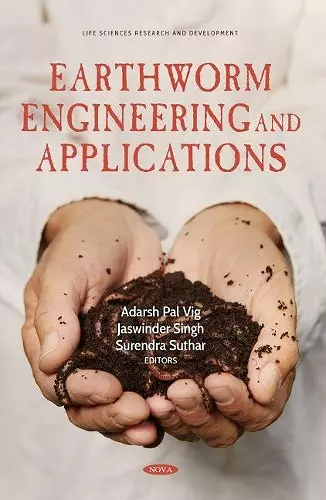Earthworm Engineering and Applications
Format:Hardback
Publisher:Nova Science Publishers Inc
Published:17th Feb '22
Currently unavailable, and unfortunately no date known when it will be back

The importance of earthworms in the ecosystem was documented very early by Aristotle, the Greek philosopher who called them "intestines of the earth" and then in 1881 Charles Darwin highlighted their role in the breakdown of dead plants as well as animal matter. In 1994, Jones designated earthworms as ecosystem engineers, due to their important role in the development and maintenance of the physico-chemical properties of soil by converting biodegradable materials and organic wastes into nutrient-rich vermicast. Earthworms enhance the incorporation of plant residue into soil aggregates, create soil porosity and stable aggregate through their burrowing, humus formation, and casting activities. The castings egested by earthworms have generally been assumed to be more stable than the parent soil aggregates and contain certain hormones, enzymes, microorganisms, inorganic and organic materials which it acquires during the passage of soil through the earthworm gut. A large number of plant hormones such as gibberellins, auxins and cytokinins are also present in vermicompost which promotes the growth of plants. Vermiwash is a clear, transparent, pale-yellow liquid obtained from the passage of water during vermiculture. Vermiwash provides nutrients to plants in easily available forms. In addition to vermicompost and vermiwash, the earthworm biomass can further be processed into earthworm meals having an important dietary and pharmaceutical application. The proteins from earthworms are rich in essential amino acids and the enzymes have been known to have anti-coagulating and fibrinolytic properties. Thus, worldwide scientists are working on earthworm biodiversity assessment and evaluation of their ecosystem services and value addition in other environmental management sectors. Efforts have been made in this edited volume to compile the recent application of earthworms in different fields of environmental management and resource conservations. The book contains three sub-sections: earthworms' role in agroecosystem and soil fertility management; vermifiltration; and industrial application of earthworm biomass. A total of 15 chapters are included in this edited volume. The first section compiles a total of nine chapters which mainly describe the role of earthworms in soil fertility maintenance, monitoring soil health and quality, pest management, and the response of agro-management practices on earthworm behaviour in soils. The second section is composed of the application of earthworm-based biofilter systems for wastewater treatment and use of vermi-wash as liquid fertilizer for plant growth promotions...
ISBN: 9781685075668
Dimensions: unknown
Weight: unknown
270 pages